10 Natural Herbs for Diabetes management
Diabetes is one of the modern lifestyle-related diseases which is increasing so fast with time. As we all know the other famous name for diabetes is “A lifestyle disease”. The increasing diabetes rate is mainly because of lack of physical exercise, eating an unhealthy diet, stress, obesity, and a sedentary lifestyle. In this article, we are going to discuss the different types of herbs that we can take day to day basis to reduce or to control the risk of diabetes.
1. Stevia rebaudiana herbs for diabetes

Stevia rebaudiana is a perennial herb that is used as a bio sweetener, The sweetness of stevia is higher than the normal sugar with little or almost no impact on the blood sugar level. The leaves of Stevia contains specific compounds of diterpene glycosides namely stevioside and rebaudioside A. These compounds are easily digestible and get absorbed in our body without any side effect.
A study done by Curi et al 1996 suggests that taking stevia helps in the suppression of plasma glucose levels and enhances the glucose tolerance of the human body (1).
Read More about Stevia health benefits >>
2. Indian blackberry or Jambul
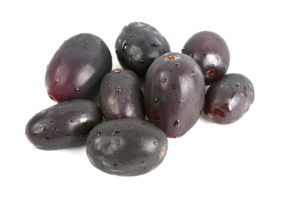
India blackberry is scientifically known as Eugenia jambolana Lam. is very effective in controlling diabetes. Jamun or Jambolan fruits especially the seeds are very effective against diabetes mellitus. The antidiabetic nature of Jamun seeds is mainly because of the compounds alkaloid jambosine, glycoside Jamboline or antimallins. It was studied that these compounds stop the starch conversion into sugar thus helps in regulating the sugar level of the body (2).
Read more about Jambul or Indian blackberry health benefits >>
3. Tinospora cordifolia herbs for diabetes
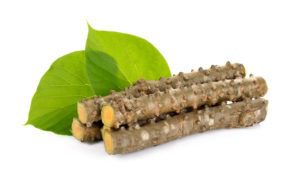
Tinospora cordifolia is also known as heartleaf moonseed or Giloy is an evergreen climbing shrub. It is an all-rounder tonic and rejuvenator with no side effects. The main medicinal property of Tinospora cordifolia is that it is anti-diabetic in nature. Consuming around 400 mg/kg of body weight daily in water helps in the reduction of blood glucose levels and thus controlling diabetes(3). Alkaloid is the main component in the stems of this plant which acts as an anti-diabetic drug through oxidative stress and by promoting insulin secretion and inhibits gluconeogenesis and glycogenolysis(4).
Read more about Tinospora cordifolia health benefits >>
4. Holy basil herb for diabetes
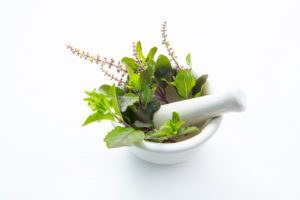
Scientifically known as Ocimum sanctum L. is a medicinally genius herb or undershrub plant having a characteristic aromatic smell. Leaves of holy basil contain many essential oils that help in regulating the glucose level of the body. Studies (5) show the essential oils of holy basil helps in the improvement of the pancreatic beta cells thus increasing the secretion of insulin. Although studies done on diabetic patients show the effect is very nominal thus holy basil can be used as an adjunctive drug against diabetic (6).
5. Gymnema sylvestre herb for diabetes
Gymnema sylvestre is a woody climber also known as gurmar from the family Asclepiadaceae. The leaf of this plant contains antidiabetic compounds namely gymnemic acid, gurmarin, many amino acids, and saponins. Gymnemic acid, therefore, helps in suppressing the craving for sugar by inhibiting the taste receptors for sugar. Not only this the leaf extract also stops the absorption of a sugar molecule in the intestine by inhibiting the receptors. Studies also revealed that G. sylvestre increases the production of endogenous insulin without a direct effect on the metabolism of carbohydrates (7).
6. Neem (Azadirachta indica) herb for diabetes
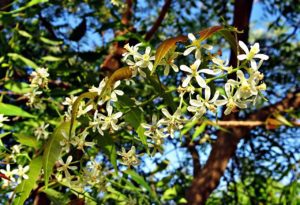
Azadirachta indica common name neem is a tree full of medicinal property. The leaves and stems of the tree are antidiabetic. The seeds are hypoglycemic in nature thus helps in insulin secretion. The leaves of this tree are full of fiber content which is helpful in managing diabetes (8).
7. Panax ginseng herb for diabetes
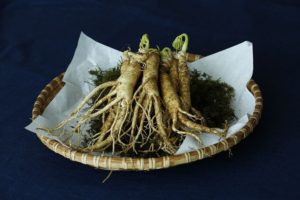
Panax ginseng is one of the most widely used products and researched species. This species is native to China and is used in Chinese medicine for thousands of years. Panax ginseng is antidiabetic in nature it increases insulin secretion thus regulate diabetes. Although continuous intake of ginseng should be avoided. There should be a break of one to two weeks for better results. Pregnant women and children should also not advisable to take ginseng. Other health effects of ginseng are it boosts the immune system, enhances physical performance, and effective against cough and cold (9).
8. Garlic
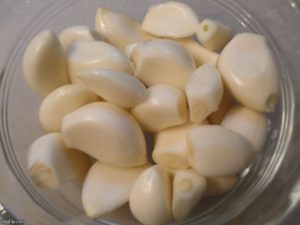
Garlic is scientifically known as Allium sativum. It is widely used in cooking. The unique pungent odor of garlic is due to the sulfur-containing compound. Besides adding taste to food it has medicinal value also. Garlic has hypoglycemic activity, therefore is a good antidiabetic agent. This hypoglycemic activity is because of its increased hepatic activity and insulin secretion.
9. Fenugreek
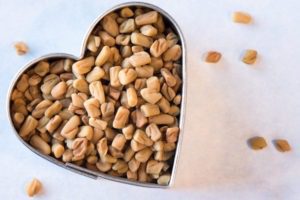
Fenugreek is scientifically known as Trigonella foenum-graecum L is a herb. The leaves and seeds of this plant possess antidiabetic activity. Oral administration decrease blood glucose level. Fenugreek seeds also improved glucose metabolism and normalized creatinine kinase activity in the heart, skeletal muscle, and liver of diabetic rats (10).
10. Bitter Gourd
Momordica charantia or Bitter gourd is a vegetable having antidiabetic property. As the name suggests it is bitter in the taste and can be eaten in the form of boiled, juice, fried, and adding in other recipes. Fruits have a hypoglycemic effect that inhibits glucose-6-phosphatase and stimulates insulin secretion. One to two fruits per day is good enough to keep a check on diabetes. This plant has no side effects.
Comparison of herbs for diabetes and their mode of actions, doses, and side effect
| S/N | Herbs | How do they act on the body? | Mode of intake | Appropriate dose | Side effects |
| 1. | Panax ginseng | Increase insulin secretion and acts like insulin | Chewed, soup or tea | 200 mg/day |
nervousness, insomnia, changes in blood pressure, breast pain, vaginal bleeding, vomiting, diarrhea, and mania
|
| 2. | Holy basil | Reduce glucose absorption | Tea in combination with lemongrass | 1 cup/day | Avoid during pregnancy |
| 3. | Garlic | Inhibit enzymes that metabolize glucose | Raw or cooked | 10 g /day/kg Bodyweight |
should not be consumed by people who have bleeding problems
|
| 4. | Gurmar | Suppress sugar craving | Chewed or tea | 1 cup/day | Excess intake causes headache or dizziness |
| 5. | Tinospora cordifolia | Reduce blood glucose level | Chewed or in water | 400 mg/kg Bodyweight | Avoid during pregnancy |
| 6. | Indian Blackberry | Inhibits starch conversion into sugar | dried seeds in water | 1 tablespoon | Safe but avoid during pregnancy |
| 7. | Stevia | Suppress plasma glucose level | Chewed or powder form | 4 mg/kg | Avoid If having low Blood pressure |
| 8. | Neem | Increase insulin secretion | Chewed or powder in water | 1 tablespoon powder | – |
| 9. | Fenugreek | Decreases blood glucose level | Dried seeds in water | 2-8 gm/kg | Hypoglycemia, low blood pressure and asthma patients should avoid |
| 10. | Bitter gourd | Increases insulin secretion | Raw | 1 -2 (100 GM) | – |
References
- https://academicjournals.org/journal/JMPR/article-full-text-pdf/57B2A0342160
- https://dx.doi.org/10.1016%2FS2221-1691(12)60050-1
- https://dx.doi.org/10.4103%2F0253-7613.100380
- http://www.plantsjournal.com/vol2Issue2/Issue_feb_2014/1-5-11.1.pdf
- http://www.ijrap.net/admin/php/uploads/894_pdf.pdf
- http://www.ijlpr.com/admin/php/uploads/95_pdf.pdf
- https://www.ncbi.nlm.nih.gov/pubmed/12020931
- http://dx.doi.org/10.4172/2167-0412.1000151
- https://www.aafp.org/afp/2003/1015/p1539.pdf
- https://www.ncbi.nlm.nih.gov/pmc/articles/PMC2275761/
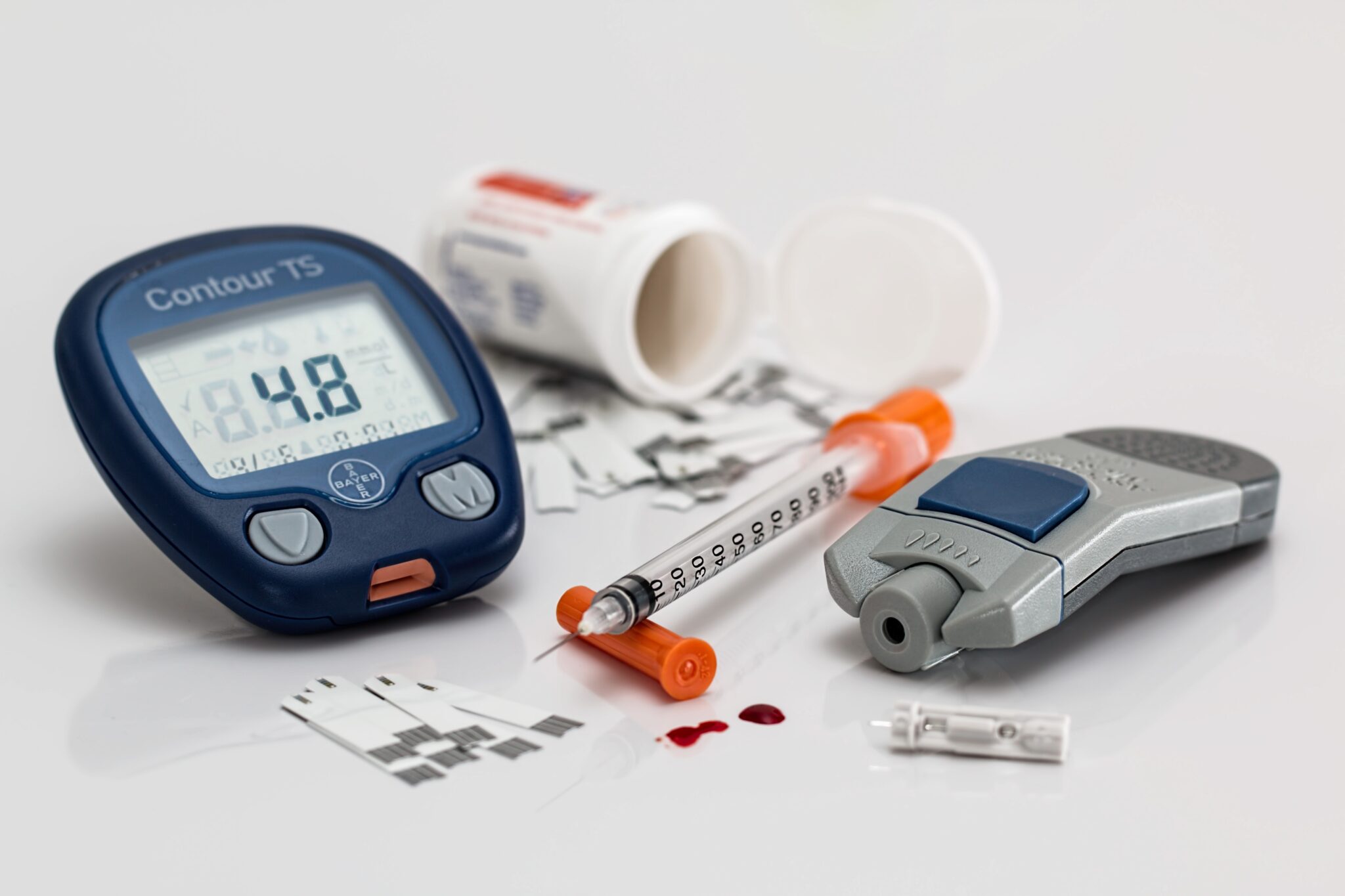
Awsome blog! I am loving it!! Will be back later to read some more. I am bookmarking your feeds also
Looking forward to reading more. Great article.Much thanks again.